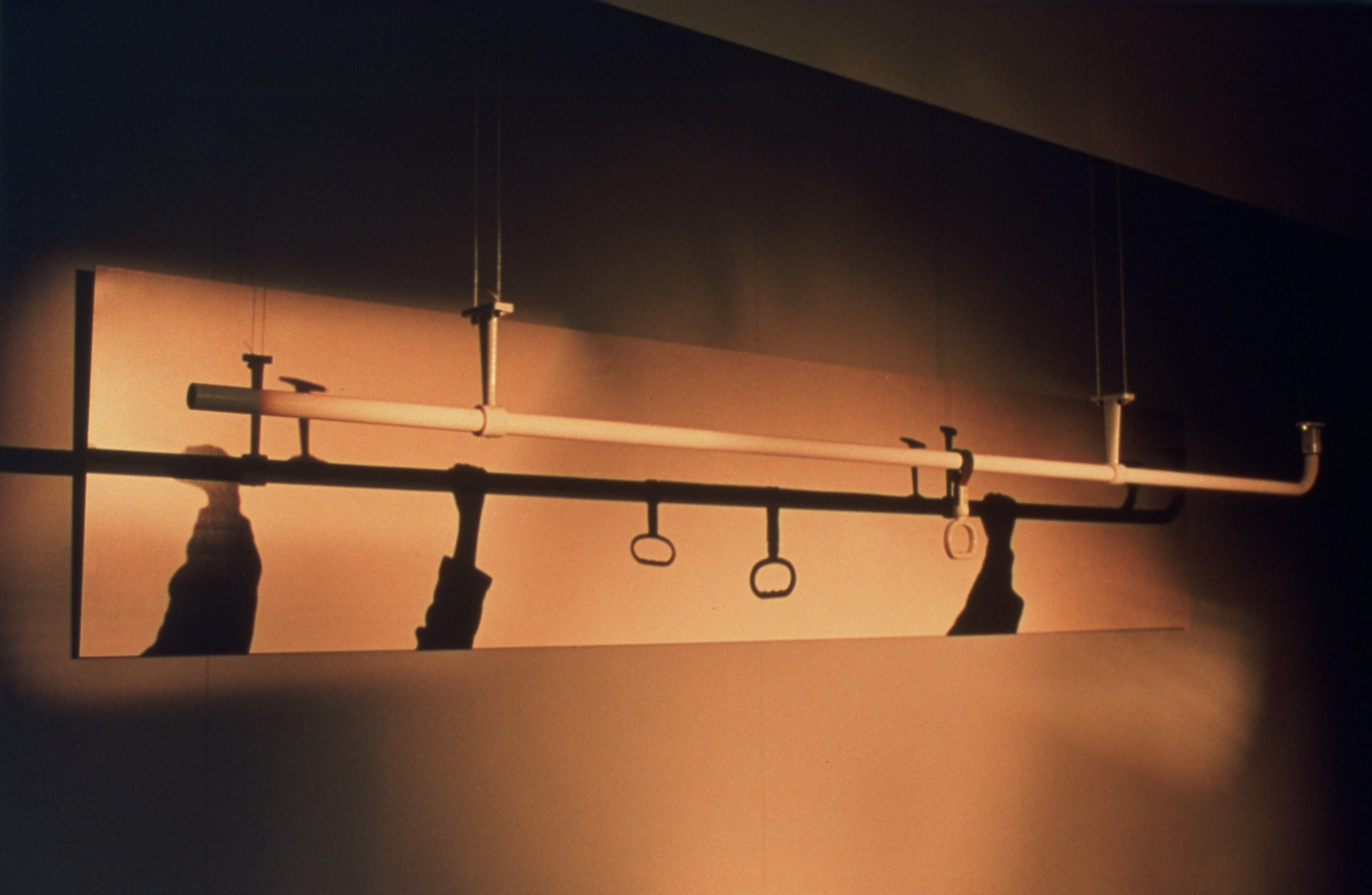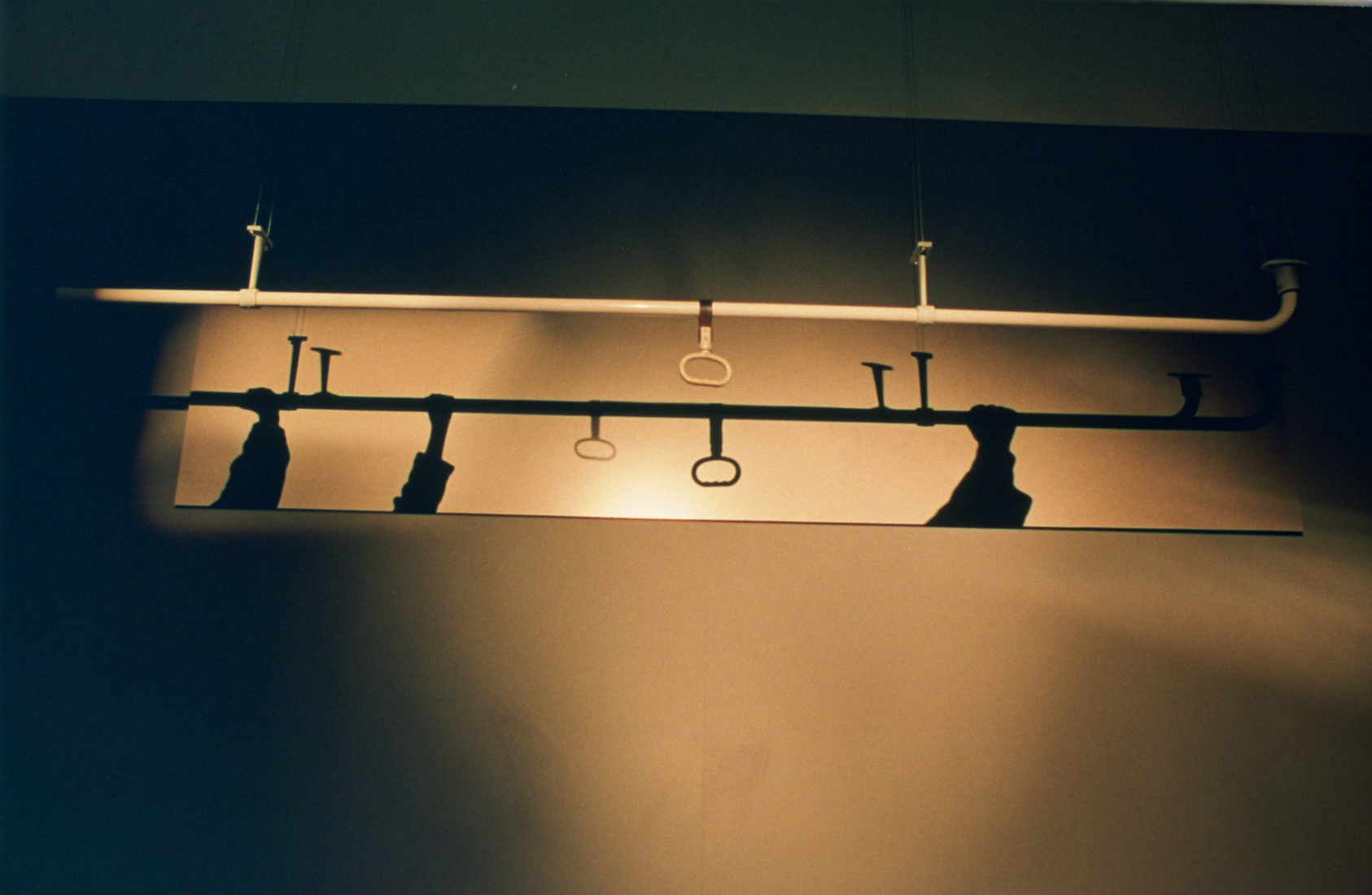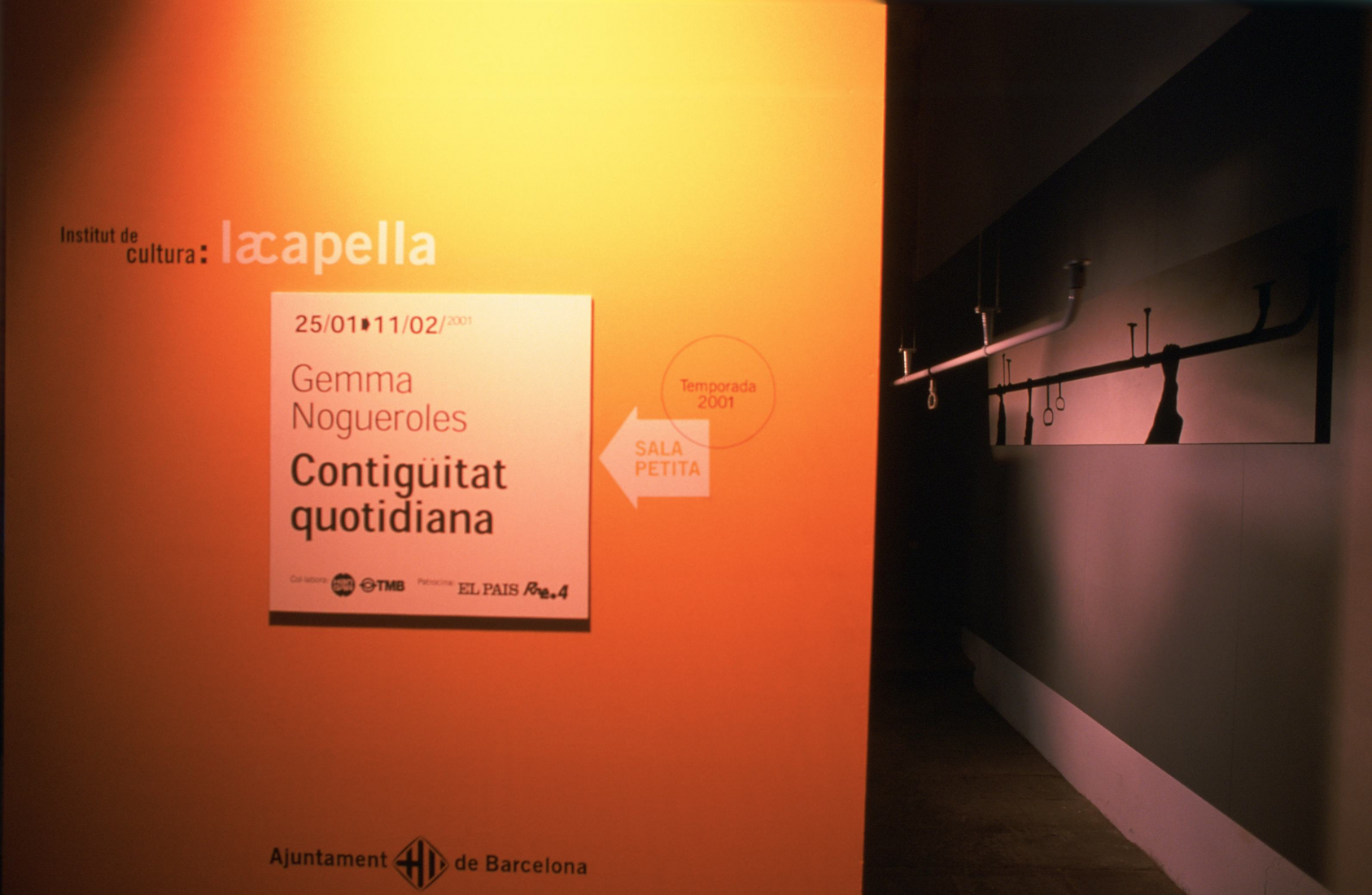Contigüitat quotidiana
Contigüitat quotidiana makes direct reference to the daily dances that take place in public space, those of the journeys, the displacement, the anonymous and the uninterested interaction between people who use public transport every day to construct their personal voyage across the skin of the city. It is the public space of the journey made by travellers on buses.
Shadows are a visual and themed device that characterises some of Gemma Nogueroles' works. Earlier pieces contained the shadows of objects, artefacts used by man that she talked about using the effects of light, objects imbued with a metaphorical charge as a result of the selection that she made. With this work, Nogueroles takes a step forward and achieves a more specific complexity. The shadows are those of a person -any person- produced by the interaction that takes places inside the bus, through the chance nature of the journey across the urban territory, and by the light that filters in through the windows os the bus. All these factors combined reveal that this is a real and specific that it could take place anywhere and hence is anonymous.
Though it lacks sound, it is an image that evokes the numerous conversations which make each of us participate, against our will, in the moment when we may become bodies casting the shadows represented here.
This is a work that represents the public space; it is not one that interacts with it.
In an earlier piece entitled Altres sons (Other sounds), exhibited at the "Art Públic Calaf 99-00" festival, Gemma Nogueroles presented a transformation of space achieved through sounds generated in certain public spaces. To my mind, the tow projects complement each other in the sense that they share the same interest in human interaction in public places: in the case of Contigüitat quotidiana, through representation; and in Altres sons, through the intervention and transformation of sound.
This work demonstrates the peripatetic wandering and the drifting of the urban masses, as propounded by the anthropologist Manuel Delgado in his book El animal Público (The Public Animal).
It is also a piece that has come into being as a result of the artist's interest in representing situations generated by the contemporary city, and in this sense it opens up an area of work consistent with the aesthetic research that Gemma Nogueroles has been to learn more about the interests that form the basis of her artistic discourse can consult her conversation with Jorge Luis Marzo, which is published on the Web site www.humano.ya/gemmano
Ramon Parramon





